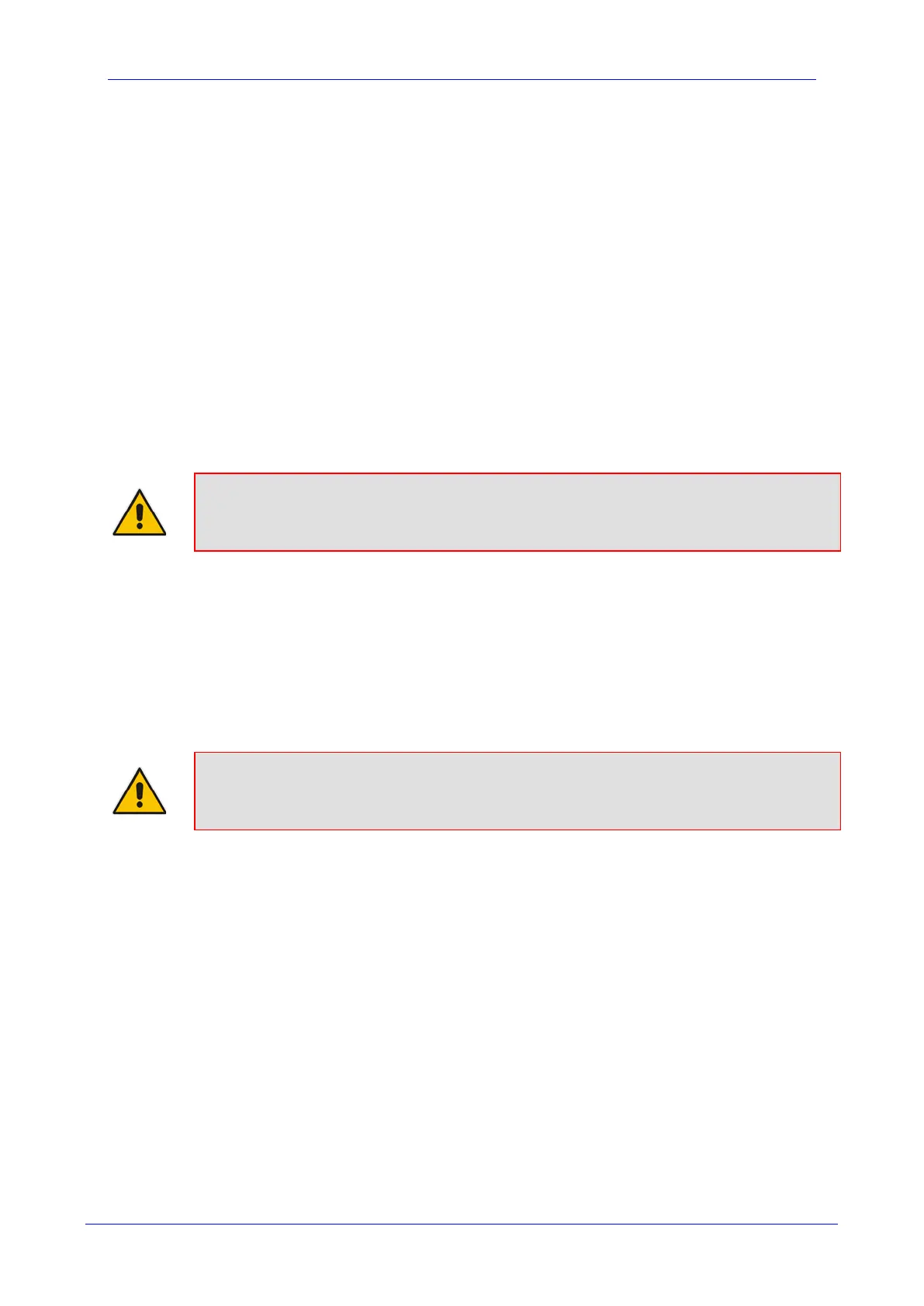Version 7.2 299 Mediant 800B Gateway & E-SBC
User's Manual 15. Services
15.7 HTTP-based Proxy Services
The device supports the following HTTP-based proxy services:
HTTP Reverse Proxy for Managing Equipment behind NAT:
You can configure the device to function as a reverse HTTP proxy server. This functionality
is required to enable administrators to manage communication equipment (such as IP
Phones) over HTTP when the equipment is located behind NAT (e.g., in the LAN) and the
administrator is located in a public domain (e.g., in the WAN). Thus, this functionality
resolves NAT issues, enabling the administrator to access the IP Phone's management
interface (e.g., embedded Web server).
To support the functionality, the following configuration is required:
1. Enable the HTTP Proxy application (see 'Enabling the HTTP Proxy Application' on page
300).
2. Define a local, listening HTTP interface for the leg interfacing with the administrator (see
'Configuring HTTP Interfaces' on page 300).
Note: It is recommended not to use port 80 as this is the default port used by IP Phones
for their Web-based management interface.
3. Define each HTTP-based managed equipment:
a. Define the URL prefix for accessing the equipment's management interface (see
'Configuring HTTP Proxy Services' on page 302). To access the equipment's
management interface, the administrator needs to enter the following URL in a
Web browser:
http://<device's WAN IP address:port>/url prefix/
b. Define the IP address of the managed equipment (see 'Configuring HTTP Proxy
Hosts' on page 303).
Note: For this feature, no special configuration is required on the managed equipment.
HTTP-based EMS Services for AudioCodes Equipment behind NAT:
You can configure the device to act as an HTTP Proxy that enables AudioCodes EMS to
manage AudioCodes equipment (such as IP Phones) over HTTP when the equipment is
located behind NAT (e.g., in the LAN) and EMS is located in a public domain (e.g., in the
WAN). Thus, the feature resolves NAT traversal issues. The IP Phones register with the
device in order to allow communication between the IP Phones and the EMS.
To support the functionality, the following configuration is required:
1. Enable the HTTP Proxy application (see 'Enabling the HTTP Proxy Application' on page
300).
2. Configure two local, listening HTTP interfaces - one for the EMS and one for the IP
Phones (see 'Configuring HTTP Interfaces' on page 300).
3. Configure the address of the EMS server (see 'Configuring an HTTP-based EMS
Service' on page 305).

